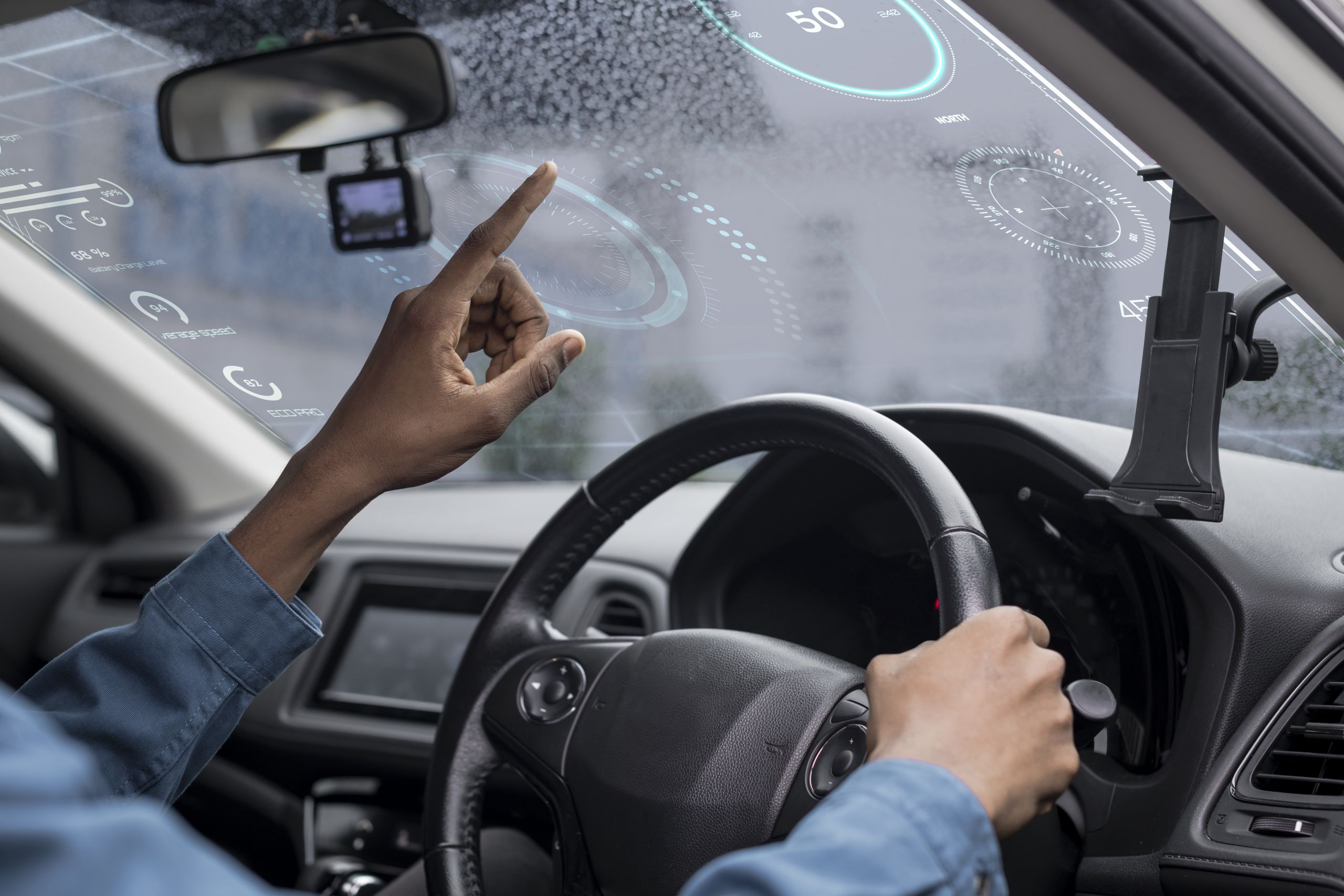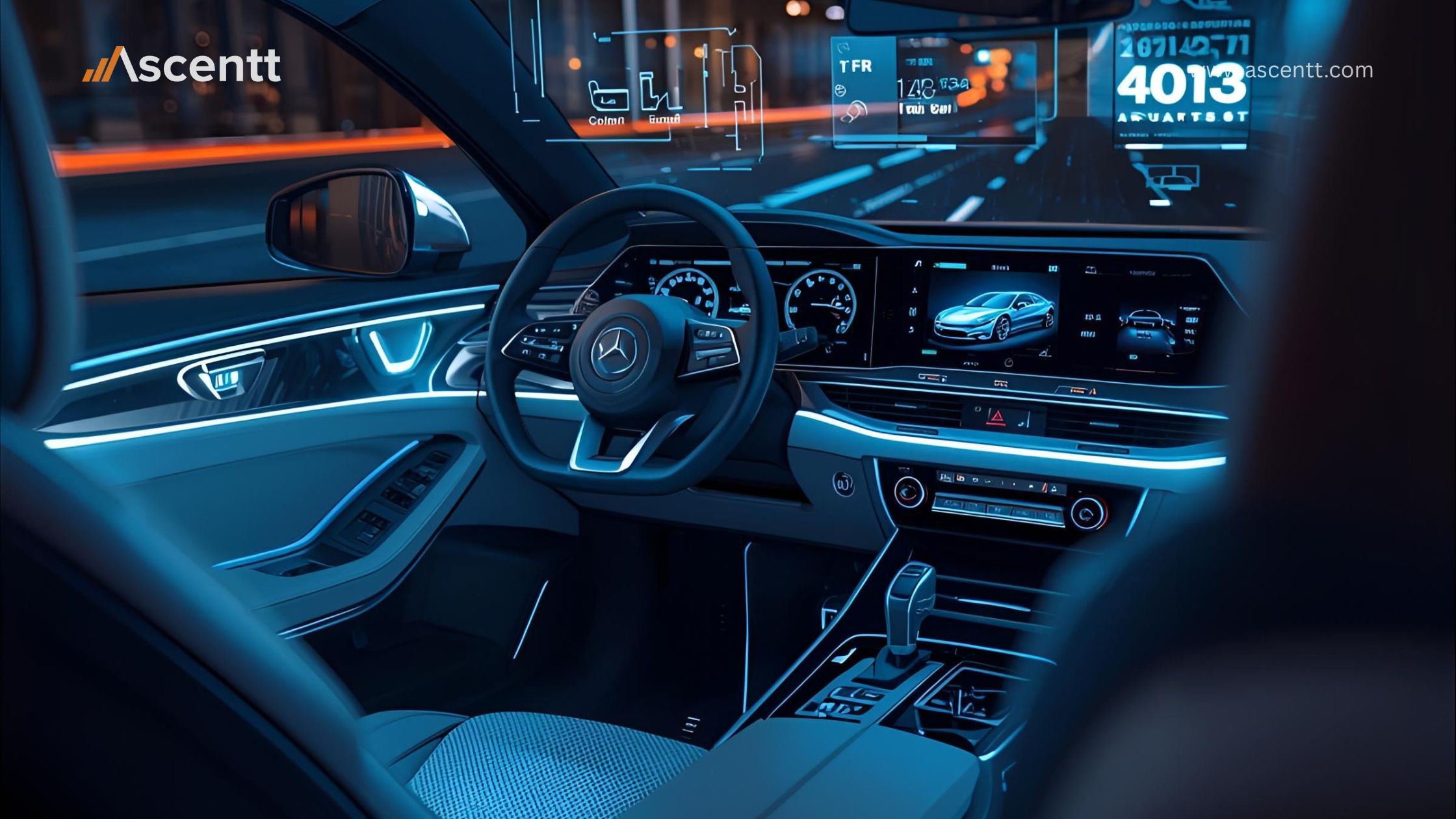Software Defined Vehicles (SDVs) are set to revolutionize the auto industry, capturing 90% of the market by 2029. These vehicles steer through software, providing unmatched adaptability, constant upgrades, and advanced protection. The rise in self-driving cars will drive chip expenditures up to $15 billion for crucial computing frameworks supporting these intelligent systems. SDVs are revolutionizing the art of driving. We will analyze the advantages and obstacles presented by this ground-breaking software-dominated automotive upheaval in detail.
What is a Software Defined Vehicle (SDV)?
The Software Defined Vehicle (SDV) is an envisaged future of vehicles driven by software rather than solely relying on hardwired hardware components. It encompasses significant functionality and capabilities handled through the power of programming. Key aspects that define an SDV include:
- The segregation of hardware and software in SDV results in a more versatile and adaptable hardware design, with the software dictating and regulating the distinct capabilities, functions, and behaviors of the vehicle.
- SDVs are equipped to receive regular software updates and enhancements through wireless networks, enabling the implementation of novel functions, elimination of bugs, and advancement in performance without physical vehicular access.
- SDVs contain robust computing systems that can manage the growing computational needs of sophisticated software tasks, such as self-driving capabilities, advanced driver assistance features, and entertainment systems.
- Software-defined features have become prevalent in the automotive industry, with powertrain management, chassis control, safety systems, and infotainment being predominantly controlled and defined by software.
- SDVs have the capability to adopt open software platforms, enabling third-party developers to generate and incorporate new applications and services into the vehicle’s software ecosystem.
How Does SDV Work?
A main electronic control unit (ECU) or group of linked ECUs acts as the main computational structure for an SDV. This centralized ECU runs a software platform, which functions like an underlying operating system or runtime environment for the vehicle. Different apps and modules are placed above this software platform to control and monitor separate vehicle functions such as powertrain management, chassis control, advanced driver assistance systems (ADAS), and infotainment systems.
In the SDV, there are different kinds of sensors like cameras, radar, lidar and GPS, wheel speed detectors as well as accelerometers. All these sensors help to collect important details about what is happening around the vehicle and its own condition. The software applications in the central ECU then process this data. The applications use advanced algorithms and programming logic to control the corresponding actuators, like the engine, transmission, brakes, steering, suspension systems, etc., which make sure that the vehicle’s actions are regulated and adjusted as needed.
Benefits of SDV
- Your Car, Always Up-to-Date
No more waiting for the next model year. SDVs are just like smartphones on wheels. They receive software updates that can:
- Unlock new features: Imagine getting a whole new driver-assist system or an upgraded entertainment package delivered right to your car. With software updates, your ride stays fresh and exciting, keeping you pumped up for the road ahead.
- Continuously improve: Just like how you troubleshoot issues on your phone, SDV updates can boost the performance of your ride, fine-tune various aspects of it, and ensure that your car keeps improving over time.
- Enhanced Safety on Every Ride
The use of SDVs offers a robust framework for the implementation of cutting-edge advanced driver-assistance systems (ADAS). These capabilities are dependent on software to convert unprocessed sensor data into instant responses that can:
- Prevent accidents: Software enhances safety through features such as automated emergency braking, which diligently halts your vehicle to avert collisions. Additionally, advancements in lane departure warning and blind spot monitoring augment your protection while traversing the roadways.
- Pave the way for autonomy: Autonomous vehicles heavily depend on intricate software for decision-making. SDVs form the basis for constructing and executing these forthcoming advancements, striving towards a future with reduced collisions and a focus on safeguarding.
- Performance and Efficiency You Can Rely On
Software plays a key role in optimizing a vehicle’s performance and efficiency:
- Engine optimization: Software adjusts the engine’s power output, controls automatic transmissions, manages energy flow in electric cars or hybrids, and maintains balance for stability control systems like ABS (anti-lock braking system) or ESP (electronic stability program). This demonstrates that software greatly contributes to improving how well your vehicle works.
- Smarter systems: Software control can augment the prowess of advanced technological advancements such as regenerative braking, which acquires energy while decelerating and replenishes it into battery reserves. Consequently, this results in a more efficacious utilization of power and potentially amplifies the mileage of electric vehicles.
Challenges in SDVs
- Cybersecurity Concerns
Hacking and cyberattacks can exploit the inter-connected nature of SDVs, resulting in someone remotely gaining control over your car’s critical systems. Safeguarding vehicle control systems and protecting sensitive data requires robust cybersecurity measures. This involves developing secure software, implementing strong authentication protocols, and constantly monitoring for vulnerabilities.
- Software Development Complexity
Another big challenge is making software for safety-critical systems in SDVs. Those who write the code have to make sure these systems are perfect because any mistakes or problems could be very serious. So, it’s important to do vigorous testing and checking to guarantee the software’s integrity and trustworthiness. Moreover, the fast growth of technology is demanding a skilled workforce who can build, maintain, and improve complex software systems.
- Regulatory Considerations
The current regulatory landscape must adjust to accommodate the distinctive dynamics of SDVs. Questions arise regarding:
- Who is accountable for any accidents caused by software errors? We need fresh norms to ensure SDVs’ safety.
- Who bears responsibility in the event of an accident involving an SDV – the manufacturer, software designer, or passenger? Definitive legal structures must be established to address these intricacies.
- The collection of extensive data by SDVs has further brought up many worries about important topics related to the privacy and security of data. It is crucial that comprehensive rules are set up to protect user information and guarantee its responsible use.
Conclusion
The SDV revolution brings the potential for evolving and adaptable cars through software. SDVs offer seamless updates, improved performance, enhanced safety measures, and potential autonomy. However, challenges remain in this journey towards a revolutionary automotive future. To overcome obstacles, prioritizing cybersecurity, rigorous software development practices, and transparent regulations is crucial. Collaboration among automakers, developers, and policymakers is essential to establish standards and protect user privacy.
As the automotive sector progresses towards a future defined by software, maintaining a leading position necessitates exceptional data science and advanced AI/ML proficiencies. At Ascentt, our team of specialists delivers tailor-made solutions in ML, AI, and data analytics to assist you in driving innovation and making well-informed choices. From anticipatory maintenance to self-driving mechanisms, we encompass an extensive array of applications. Reach out to Ascentt to flourish in the era of advanced, flexible, and information-based automotive technology.



